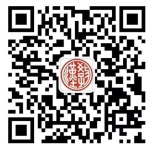Dousu
Beans art, also
known as seeds painting, is to use seeds’ original shape, color and other
qualities to make a landscape, figures, flowers, birds etc.. It is a unique
form of folk arts, which is vivid and humorous with interesting images
exhibiting folk stories and traditions, especially of new and old Beijing life.
Rabbit God
Rabbit God is a
traditional toy of old Beijing. It was first appearing in the late years of the
Ming dynasty, carved out of loess to produce rabbit face with human figure.
Originally it was made as a shrine for the moon, later it was worshipped in the
Chinese New Year, but had now evolved to a toy for kids.
Paper-cut
Paper-cut, also
known as “chuanghua”, is the most popular traditional decorative folk art. Some
hollow patterns are cut into paper, gold or silver foil, leaves and cloth with
a knife or scissors. Chinese use paper-cut to express their love for life and a
better future.
Chinese knotting
Chinese knotting
is gradually evolved from knots tying which was used to keep records in
history. The "knot" had a variety of emotions and aspirations in a
long process of evolution. Chinese knotting is made from a color string, which
is consistent from top to bottom, the same on both sides. At present, there are
more than 10 basic knotting methods, such as the double-coin knot, buttons
knot, cross knot, auspicious knot etc.. It is a symbol of Longevity, happiness
and best wishes in Chinese culture.
Beijing
embroidery
Beijing
embroidery, also known as royal embroidery was originated in the Tang Dynasty
and flourishing in the Ming and Qing Dynasties. It was offered as decorations
for the Royal palace and the clothing of the nobles in the feudal era. Beijing
embroidery is different from other embroideries, due to its luxury, colors,
fine workmanship and delicate materials.
Sugar figurine
Sugar figurine,
which is made of a variety of shapes, figures, animals, and plants by sucrose
and maltose, began in the Song Dynasty. In accordance with the production
process, it was divided into blowing, painting and modeling. The craftsmen in
old Beijing had been always working on the street. Sugar figurine is not only
beautiful and of fun, but also tasty, which makes it a children's favorite.
Facial makeup
Facial makeup is
the special-designed pattern drawn on actors/actresses' faces with a variety of
colors in Chinese traditional operas. Different colors of facial makeup
symbolize different personalities and roles in the opera. For example, red is
the color of loyalty, integrity and courage; black suggests a serious and
taciturn disposition with strength and roughness; white reveals a crafty and
suspicious character; a blue face is outspoken and defiant, and so on.
‘Monkey’art
‘Monkey ’art is
an old tradition of handicrafts in Beijing, which reflects the life and work of
the old city. ‘Monkey ’art is made of the bud of Magnolia flowers and cicada
slough. There is a layer of hair on the surface of Magnolia flower, which can
be used for the monkey’s body. Cicada slough can be used for monkey’s head and
limbs. A beautiful “monkey” will be done when these two parts are pasted
together.
Kite
In 5th century BC, Chinese people began to fly kites,
which was made of bamboo and wood chips previously and with a variety of shapes
and colors of paper now. Ching Ming (Tomb-sweeping Day) is a good time for
kite-flying for adults and children. In ancient times, people wrote their names
on the kite, and then cut the line while it was flying to take away their bad
luck.
Dough figurine
Dough Figurine
is a simple folk handicraft demonstrating high artistic quality. Wheat and rice
flour are used as the main raw materials, mixed into different colors with the
use of preservatives and mildew-proof processing. Artists create a variety of
lifelike images by their hands and simple tools.
Fire gourd
painting
Fire gourd
painting, also known as ironing painting, is to etch a pattern onto the cover
of objects with a hot iron. In ancient times it was etched onto bamboo
articles, the coverings of fans or the surface of the furniture, in order to
cover up their unsightliness. This skill was gradually moved onto gourds
because gourd in Mandarin sounds like the word of good luck and fortune.




